Rank Species Higher classification Clione | Superfamily Clionoidea Subfamily Clioninae Scientific name Clione limacina | |
 | ||
Similar Limacina, Clione, Sea angel, Molluscs, Limacina helicina | ||
Sea angel clione limacina
Clione limacina, known as the naked sea butterfly, sea angel, and common clione, is a sea angel (pelagic sea slug) found from the surface to greater than 500 m (1,600 ft) depth. It lives in the Arctic Ocean and cold regions of the North Pacific and North Atlantic Oceans. It was first described by Martens in 1676 and became the first gymnosomatous (without a shell) "pteropod" to be described.
Contents
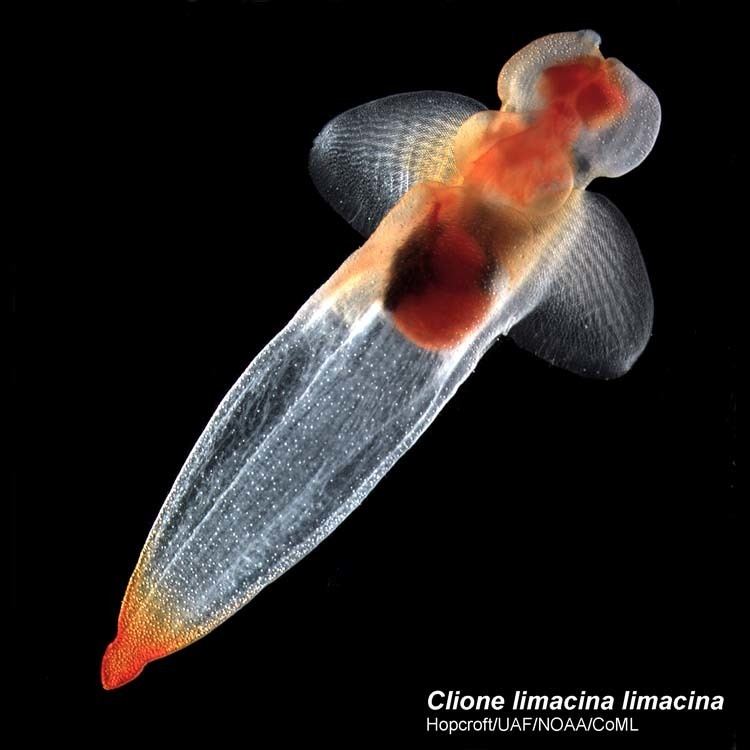
Subspecies
Distribution
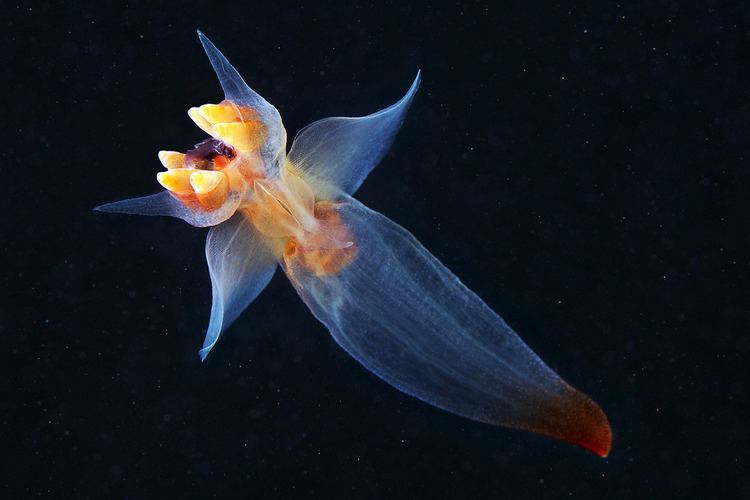
Clione limacina is found in cold waters of the Arctic Ocean, North Pacific Ocean and North Atlantic Ocean. A closely related species, Clione antarctica, is found in Antarctic waters.
Description
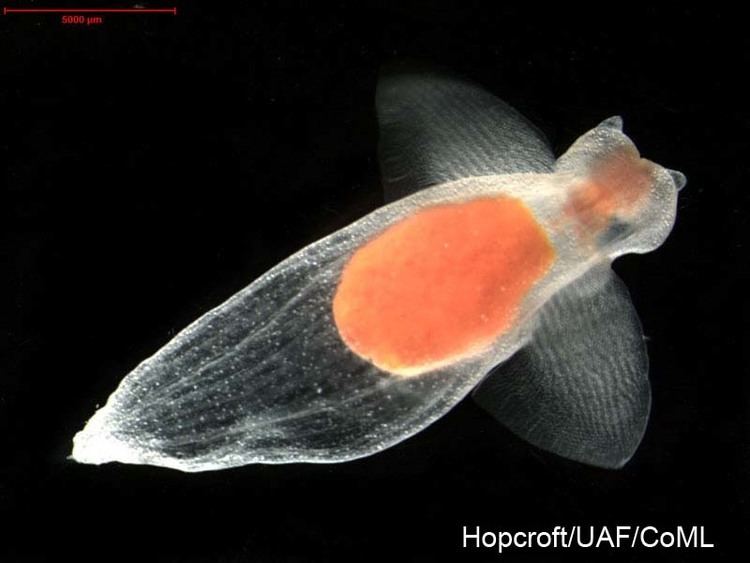
There are two subspecies that differentiate in body length. The northern subspecies lives in colder water, matures at 3 cm (1.2 in) and can reach a size of 7–8.5 cm (2.8–3.3 in). The size of the southern subspecies is 1.2 cm (0.47 in).
The neurobiology of this pteropod has been studied in detail.
Ecology
Clione limacina inhabits both the epipelagic and mesopelagic regions of the water column.
Feeding habits
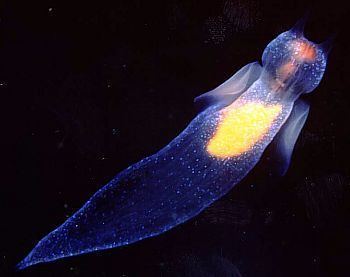
Adults feed in a predator-prey relationship almost exclusively on the sea butterflies of the genus Limacina: on Limacina helicina and on Limacina retroversa. The feeding process of Clione limacina is somewhat extraordinary. The buccal ("mouth") apparatus consists of three pairs of buccal cones. These tentacles grab the shell of Limacina helicina. When the prey is in the right position, with its shell opening facing the radula of Clione limacina, it then grasps the prey with its chitinous hooks, everted from hook sacs. Then it extracts the body completely out of its shell and swallows it whole.

Adult Limacina are absent for much of the year, leaving C. limacina without access to their main food source. A study of 138 C. limacina during a period without adult Limacina found that the stomachs of 24 contained remains of amphipods and 3 contained remains of calanoids. This temporary prey change may allow them to survive in periods of starvation, although the species can survive for one year without food. Under such exceptional starvation in the laboratory the length of slugs have decreased on average from 22.4 to 12 mm (0.88 to 0.47 in).
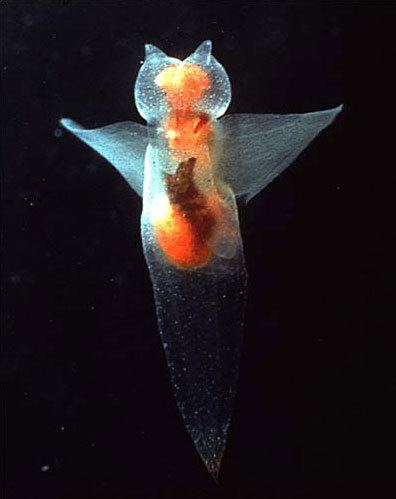
The earliest larvae stages of C. limacina feed on phytoplankton, but from the later laval stage this changes to Limacina. The development of these two species is parallel and small C. limacina feed on Limacina of a similar size, while large C. limacina avoid small Limacina (including its larvae).
Life cycle
In Svalbard, the life cycle of C. limacina appears to be at least 2 years. It is a hermaphrodite and observations suggest this is simultaneous. It breeds during the spring and summer, and the eggs are about 0.12 mm (4.7 thou).
Clione limacina is a prey of planktonic feeders, such as the baleen whales, which historically led to sailors naming it "whale-food". Some fishes are also its predators. For example, the Chum Salmon, Oncorhynchus keta, is a major predator of sea angels.
